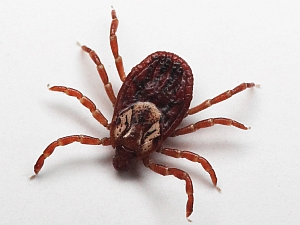Medical researchers at Virginia Commonwealth University in Richmond, with colleagues from Yale University and University of California in Davis, identified pathways and processes used by bacteria responsible for some tick-transmitted diseases to infect humans and animals. The team led by VCU’s Jason Carlyon published its findings in the November issue of the journal Infection and Immunity.
Carlyon and his colleagues believe their discoveries could lead a single vaccine to prevent infection by these bacteria, by shutting down access to these infection pathways and processes. VCU has filed a patent for this work, with American and foreign rights available for licensing. The researchers are seeking commercial partners to further develop this technology.
Bacteria depend for their survival on their ability to invade human or animal cells, which needs to be done in a precise way. In addition, bacteria use specific characteristics on their surfaces to discover the entrances into their host cells. Carlyon and colleagues studied the ways the bacterium Anaplasma phagocytophilum infects humans to cause granulocytic anaplasmosis, the second most common tick-transmitted disease after Lyme disease in the U.S., also found in Europe and Asia.
The Centers for Disease Control and Prevention say Anaplasma phagocytophilum is transmitted by the blacklegged tick (Ixodes scapularis), commonly known as a deer tick and found in the South and Middle Atlantic states in the U.S. The western blacklegged tick (Ixodes pacificus) found in the Pacific and mountain states also can transmit the Anaplasma phagocytophilum bacterium.
The researchers discovered a protein known as outer membrane protein A or OmpA on the surface of the Anaplasma phagocytophilum bacterium, and more specifically, the region of OmpA that mediates infection. This area of the protein appears to be shared by other Anaplasmataceae bacteria. The team also identified the sugar residue on the surfaces of host cells to which OmpA binds.
“These findings are important,” says Carlyon, “because our data also establish a direction for development of a single vaccine that protects against members of an entire family of bacteria that cause disease in humans, domestic animals and livestock.” Carlyon adds that livestock infections carry a significant economic burden, costing the U.S. cattle industry alone some $100 million per year.
Read more:
- Tattoo Infections Traced to Bacteria in Premixed Ink
- Simulator Shows Blood Stream Bacterial Formation
- Imaging Technology Devised to Identify Infection Response
- Liquid Coating Prevents Biofilm Build-Up on Surfaces
- Selenium Found to Control Staph Bacteria on Implant Material
* * *


 RSS - Posts
RSS - Posts
You must be logged in to post a comment.